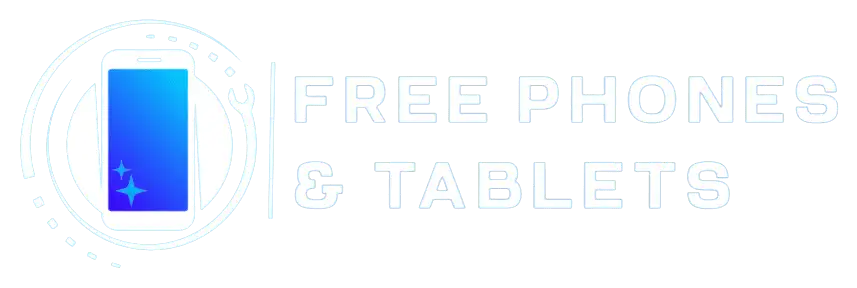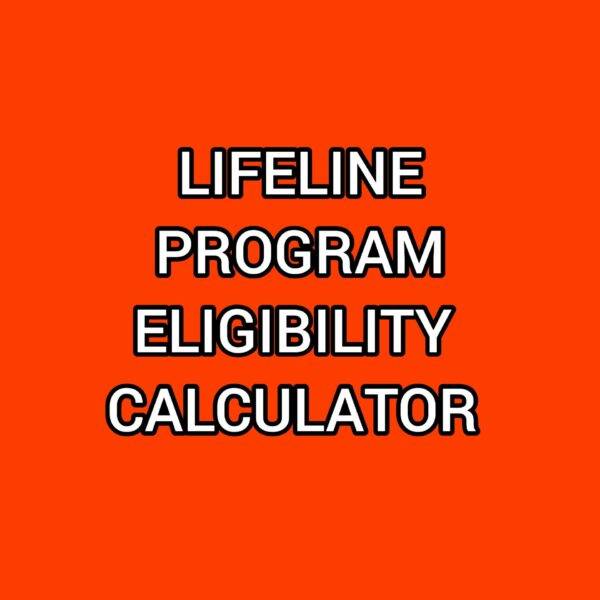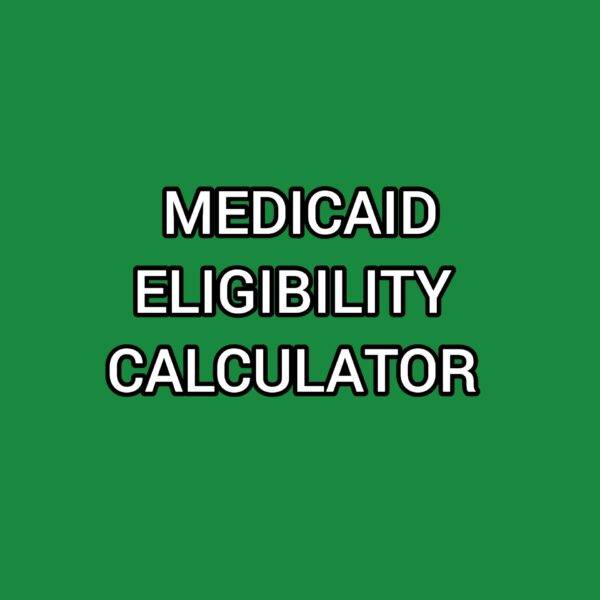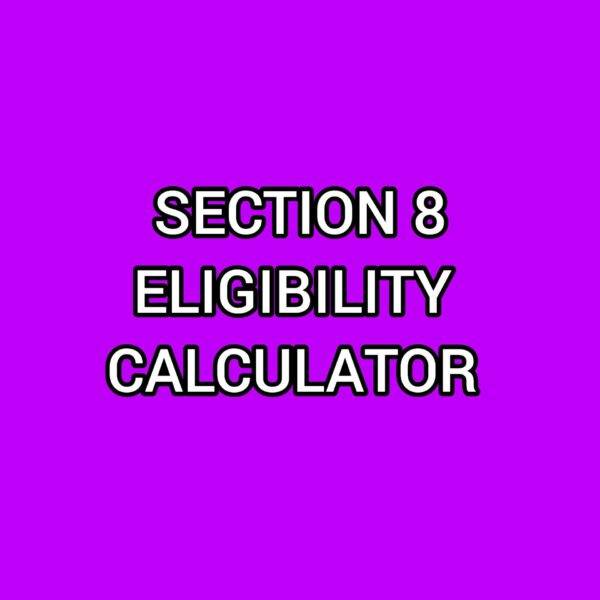Government Benefit Eligibility Calculator
Our “Government Benefit Eligibility Calculator” is a one of a kind tool that helps determine your potential eligibility for various government benefits based on your monthly income. It covers a range of benefits such as Lifeline Phones, ACP Tablets, SNAP (EBT), Medicaid, Section 8 Housing and Cash Assistance payments.
30 Frequently Asked Questions About Government Assistance Programs and Benefits
What government assistance programs are available for low-income individuals?
There are several government assistance programs available for low-income individuals, including Medicaid, SNAP (Supplemental Nutrition Assistance Program), housing assistance programs, TANF (Temporary Assistance for Needy Families), and Social Security Disability benefits.How do I know if I’m eligible for Medicaid?
Medicaid eligibility varies by state, but in general, individuals and families with low incomes and limited resources may be eligible for Medicaid. Eligibility is based on factors such as income, family size, and citizenship status. You can check your eligibility and apply for Medicaid through your state’s Medicaid agency or healthcare exchange.Can I receive SNAP Food Stanp benefits if I’m unemployed?
Yes, unemployed individuals may be eligible for SNAP EBT benefits if they meet the income and resource requirements. However, the amount of benefits you receive may be affected by your income and expenses.What are the income requirements for Section 8 housing assistance programs?
The income requirements for Section 8 housing assistance programs vary by program and location. Generally, individuals and families with very low incomes, defined as 50% of the median income for their area, may be eligible for housing assistance programs such as Section 8 vouchers or public housing.What is the eligibility criteria for Temporary Assistance for Needy Families (TANF)?
TANF eligibility varies by state, but generally, families with children under the age of 18 who are experiencing financial hardship may be eligible for TANF. Eligibility is based on factors such as income, family size, and citizenship status. TANF may provide cash assistance, job training, and other support services.How can I find out if I’m eligible for Social Security Disability benefits?
To be eligible for Social Security Disability benefits, you must have a qualifying disability that prevents you from working and that is expected to last for at least 12 months or result in death. You must also have paid into the Social Security system for a certain number of years. You can apply for Social Security Disability benefits online, by phone, or in person at a Social Security office.Do I qualify for the Earned Income Tax Credit (EITC)?
The Earned Income Tax Credit (EITC) is a tax credit for low- to moderate-income working individuals and families. Eligibility for the EITC is based on factors such as income, filing status, and number of qualifying children. You can use the IRS EITC Assistant tool to determine your eligibility and estimate the amount of credit you may receive.What are the qualifications for the Women, Infants, and Children (WIC) program?
The Women, Infants, and Children (WIC) program provides nutrition assistance to pregnant women, new mothers, and young children. Eligibility is based on factors such as income, residency, and nutritional risk. To qualify, you must be a pregnant or postpartum woman, an infant or child up to age five, and meet income guidelines set by the program.Can I receive unemployment benefits if I was laid off due to the COVID-19 pandemic?
Yes, if you were laid off due to the COVID-19 pandemic, you may be eligible for unemployment benefits. The Coronavirus Aid, Relief, and Economic Security (CARES) Act provides additional benefits for individuals affected by the pandemic, such as expanded eligibility and increased benefit amounts.What government programs are available to help with childcare expenses?
There are several government programs available to help with childcare expenses, including the Child Care and Development Fund (CCDF) and the Child and Dependent Care Tax Credit. Eligibility for these programs is based on factors such as income and family size. Some states may also offer additional programs or subsidies for childcare.What is LIHEAP and how can it help with my energy bills? LIHEAP is the Low-Income Home Energy Assistance Program, a federally-funded program that helps low-income households pay for their home energy costs, including heating, cooling, and other energy-related expenses. The program provides assistance through cash grants and crisis assistance to eligible households. To apply for LIHEAP, individuals should contact their state or local LIHEAP office.
Can I receive both SSDI and SSI benefits at the same time? Yes, individuals can receive both Social Security Disability Insurance (SSDI) and Supplemental Security Income (SSI) benefits at the same time, as long as they meet the eligibility requirements for both programs. However, the amount of SSDI benefits received may affect the amount of SSI benefits received.
What is the School Breakfast Program and how can my child qualify? The School Breakfast Program is a federally-funded program that provides nutritious breakfasts to school-age children at no cost or at a reduced cost. To qualify, a child must be enrolled in a participating school and meet certain income eligibility requirements. Parents can contact their child’s school to find out more information on how to apply for the program.
What is HEAP and how can it help me with my heating bills? HEAP is the Home Energy Assistance Program, a federally-funded program that provides financial assistance to low-income households to help pay for their heating bills. The program provides assistance through cash grants and crisis assistance to eligible households. To apply for HEAP, individuals should contact their state or local HEAP office.
What is the National School Lunch Program and how can my child qualify? The National School Lunch Program is a federally-funded program that provides nutritious lunches to school-age children at no cost or at a reduced cost. To qualify, a child must be enrolled in a participating school and meet certain income eligibility requirements. Parents can contact their child’s school to find out more information on how to apply for the program.
What is the Low-Income Home Energy Assistance Program (LIHEAP) and how can it help me pay for heating and cooling costs? LIHEAP is a federally-funded program that provides financial assistance to low-income households to help pay for their home energy costs, including heating, cooling, and other energy-related expenses. The program provides assistance through cash grants and crisis assistance to eligible households. To apply for LIHEAP, individuals should contact their state or local LIHEAP office.
Can I receive unemployment benefits if I quit my job? In general, individuals who quit their job voluntarily are not eligible for unemployment benefits. However, there are some exceptions, such as if the individual quit their job for a good cause, such as a medical condition or domestic violence. Each state has its own specific rules and regulations regarding eligibility for unemployment benefits, so it’s best to contact the state’s unemployment office for more information.
What is the Federal Pell Grant and how can I apply for it? The Federal Pell Grant is a need-based federal financial aid program for college students that does not need to be repaid. To apply for the Pell Grant, students must complete the Free Application for Federal Student Aid (FAFSA) form. The amount of the grant varies depending on the student’s financial need, the cost of attendance at the school, and other factors.
How can the Supplemental Security Income (SSI) program help individuals with disabilities? The Supplemental Security Income (SSI) program is a federal program that provides financial assistance to individuals with disabilities who have limited income and resources. The program provides cash benefits to help with basic needs such as food, shelter, and clothing. To be eligible for SSI, individuals must meet certain disability and income requirements.
- What is the Child Tax Credit and who is eligible to receive it? The Child Tax Credit is a federal tax credit designed to help families with the cost of raising children. The credit allows eligible families to reduce their federal income tax liability by up to $2,000 per child under the age of 17. To be eligible for the credit, families must meet certain income requirements and have a qualifying child. The credit is partially refundable, which means that eligible families can receive a refund even if they do not owe any federal income tax. The eligibility requirements and credit amount vary based on the tax year, so it’s best to consult the IRS website or a tax professional for the most up-to-date information.
What is the Supplemental Nutrition Assistance Program (SNAP) and how can it help me? The Supplemental Nutrition Assistance Program (SNAP) is a federal program that helps low-income individuals and families purchase food. It provides eligible participants with an electronic benefits card (EBT) that can be used like a debit card to purchase food at participating retailers. Eligibility for the program is based on income and other factors, and benefits are distributed monthly.
What is the Community Development Block Grant (CDBG) program and how can it help my community? The Community Development Block Grant (CDBG) program is a federal program that provides grants to states, cities, and counties to support a wide range of community development activities. The program’s primary goal is to help low- and moderate-income communities meet their development needs, including affordable housing, job creation, and community facilities.
What is the Medicaid Waiver program and how can it help individuals with disabilities? The Medicaid Waiver program is a federal program that allows states to provide a range of services and supports to individuals with disabilities who would otherwise require institutional care. Services can include home and community-based care, respite care, personal care, and other supports. Eligibility and availability of services vary by state.
What is the Housing Choice Voucher program and how can I apply for it? The Housing Choice Voucher program (also known as Section 8) is a federal program that provides rental assistance to eligible low-income families, seniors, and individuals with disabilities. Participants are given a voucher that they can use to rent a unit from a participating landlord. Eligibility is based on income and other factors, and waiting lists can be long in some areas.
Can I receive unemployment benefits if I was fired from my job? Generally, eligibility for unemployment benefits is based on whether or not an individual has lost their job through no fault of their own. If an individual was fired for misconduct or other reasons, they may not be eligible for unemployment benefits. Eligibility and benefit amounts vary by state.
What is the Free Application for Federal Student Aid (FAFSA) and how can I apply for it? The Free Application for Federal Student Aid (FAFSA) is a form that students and their families must fill out to be considered for federal financial aid for college or career school. The form asks for information about the student’s family income, assets, and other factors that can affect their ability to pay for college. The form is available online and must be completed each year.
What is the Federal Emergency Management Agency (FEMA) and how can they help me during a disaster? The Federal Emergency Management Agency (FEMA) is a federal agency that provides assistance to individuals and communities during and after disasters. This can include temporary housing, financial assistance, and other forms of support. Individuals can apply for FEMA assistance online or by phone.
What is the Earned Income Credit (EIC) and how can it help me? The Earned Income Credit (EIC) is a federal tax credit designed to help low- to moderate-income workers. The credit is based on the individual’s earned income and family size and can provide a significant boost to their tax refund. Eligibility and credit amounts vary based on income and other factors.
What is the Veterans Affairs (VA) program and how can it assist veterans? The Veterans Affairs (VA) program is a federal program that provides a wide range of services and benefits to eligible veterans and their families. This can include healthcare, disability compensation, education and training, and housing assistance. Eligibility and available benefits vary based on the individual’s service history and other factors.
- What is the Child and Dependent Care Tax Credit and how can I claim it? The Child and Dependent Care Tax Credit is a tax credit that can help you offset the cost of care for your child or dependent. To claim the credit, you must file Form 2441, Child and Dependent Care Expenses, with your federal income tax return.
Stay connected with your loved ones using your Lifeline Phone or ACP Tablet - a great solution for staying in touch with family.







